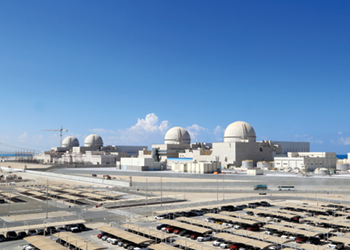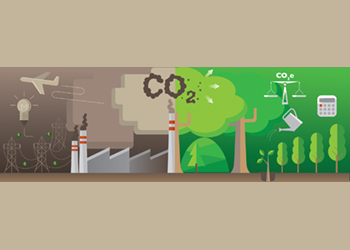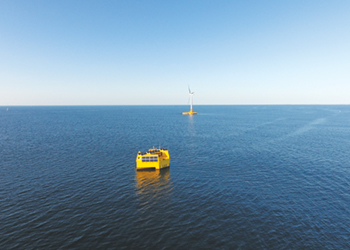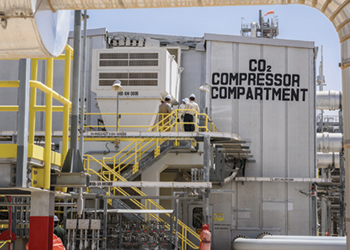
.jpg) Investments in the oil and gas industry have been facing problems
Investments in the oil and gas industry have been facing problems
The oil and gas industry has suffered from external discreditation through climate and social misconceptions, generating stigmas that have affected its investment attractiveness
In general, four key challenges in the oil and gas industry are generating concerns among policymakers and investors regarding the industry’s investment attractiveness.
These are price volatility, uncertainties due to significantly diverging long-term forecasts, increasing climate change concerns, and the lack of regulation on environmental, social, and governance (ESG), making it unclear.
A report by the King Abdullah Petroleum Studies and Research Center (KAPSARC) provides a deep insight into those challenges, providing an analysis that will facilitate an understanding of different perspectives on the investment situation in the oil and gas industry.
PRICE VOLATILITY
The oil and gas market has recovered from the lows of April 2020 when oil was $20 per barrel to more than $90 in February 2022. This 400 per cent increase has given investors optimism. At the same time, it has generated an unstable and volatile price environment for long-term investors.
Typically, a commodity with high price volatility is not the first option among value investors looking for steady gains or short-term wins.
Financial participants are more likely to invest their capital in commodities with prices that experience low price fluctuations.
In a volatile, upward trending market, prices are likely to rise fast, but they are also susceptible to rapid drops.
Analysts are split in their oil and gas price outlooks for 2022. Some experts, looking at the fundamentals of the oil market, suggest that an oversupply of oil and saturated inventories will make the oil price fall far below current levels. Other experts forecast high oil and gas prices, based on the assumption that they will be affected by high prices for other commodities.
During the past two years, high volatility combined with backwardation in crude oil futures has led investors to shy away from investing.
In any case, during the past two years, high volatility combined with backwardation in crude oil futures has led investors to shy away from investing.
INCREASINGLY DIVERGING LONG-TERM DEMAND PROJECTIONS
One of the most important uncertainties impacting oil investment is the significant difference between medium- and long-term oil outlooks.
The divergence of views between these forecasts has been ongoing for years, and it is expanding in recently published outlooks by organisations and international oil companies.
Long-term oil outlooks use assumptions based on specific scenarios. They range from including the full achievement of climate policies to no climate policies at all.
They also have a new lexicon that describes the future of oil and gas forecasts, including carbon budgets, unburnable carbon, energy transitions, peak demand, and stranded assets, among other items.
However, the big gap within oil outlooks could bring investment scarcity and instability to the oil and gas market.
The energy transition is just starting, and high oil and gas demand will still need security of supply for decades and a permanent injection of capital to keep it running. Diminished financing for exploration and production will result in supply crises.
Many of the current outlooks presented by various stakeholders represent scenarios under idealistic assumptions that do not reflect current trends. They aim to reach a desired endpoint, such as net-zero emissions by 2050.
According to the Institute of Energy Economics, Japan (IEEJ) and Opec, under more realistic assumptions, oil demand will continue growing for, at least, 10 more years unless extreme actions are taken. This is, in part, due to the growing energy needs of emerging nations.
Based on the IEEJ and Opec outlooks, it is necessary to consider that the oil and gas market will need significant (upstream) investment to satisfy future demand. Under financing will lead to supply deficits, generating higher fuel prices and causing inflation in many commodities.
Many of the net-zero assumptions are contingent on the extensive and successful implementation of climate policies. Those scenarios aim to guide what needs to be done instead of actual energy outlooks.
EVOLVING GOVERNMENT CLIMATE REGULATIONS
The world could celebrate 2021 as the year when fossil fuel-dependent economies and stakeholders decided to act.
Countries such as Saudi Arabia, India, Russia, and several others set long-term targets when they entered into climate change negotiations to help the world reach carbon neutrality.
Nevertheless, the transition to net-zero carbon needs to be addressed responsibly to avoid an energy supply crisis and underinvestment in the sector.
In November 2021, a crucial step was reached by fossil fuel consumers and producers at the 26th United Nations Climate Change Conference of Parties (COP 26) meeting in Glasgow.
At the end of the conference, their interventions managed to bring calls for the ‘phasing down’ rather than ‘phasing out’ of coal and for governmental support for renewables rather than all sources of energy.
The calls highlighted many issues that climate experts had not considered when suggesting eliminating fossil fuels.
National oil companies (NOCs) have also aligned with their country’s initiatives, setting long-term net-zero targets.
For example, Saudi Aramco announced its ambition to achieve net-zero Scope 1 and 2 greenhouse gas emissions by 2050.
Any actions taken by NOCs will significantly impact the oil and gas market.
Companies with long-life conventional production portfolios, such as Aramco, have lower corporate upstream emission intensities than those with other production mechanisms such as shale producers
This is mostly because conventional production is less energy-intensive than alternative production techniques.
The pressure to implement net-zero targets has not only been felt by the NOCs of oil-producer governments. Interventions from activist shareholders and environmentalists also pushed most big IOCs to set net-zero targets during 2021 or even before.
Top managers from Exxon Mobil and Chevron had to deal with new stringent climate and environmental demands from their investors. These interventions, which are becoming frequent in the industry, force IOCs to reconsider their long-term production plans.
In addition to the environmental pressure that IOCs are under, there is another reason why IOCs are accelerating into the transition compared with NOCs. The average profit per barrel of oil equivalent (boe) generated by IOCs in 2021 was $6.60 per boe, compared with the $8.20 generated by NOCs.
Profits are still high. However, environmental and climate pressure from internal and external stakeholders will reduce the IOCs’ profits faster than the NOCs’.
IOCs need to find alternatives to satisfy the public as they do not count on governmental support. IOCs are more exposed to public discontent.
UNCLEAR ESG REGULATIONS
During the energy transition, climate issues are not the only concerns that oil and gas companies must consider.
Today, organisations are called to incorporate environmental, social, and governance (ESG) values and metrics that, in combination with financial profit, will define the success of a sustainable institution that is in harmony with society.
The social (S) approach considers employment practices, community engagement, worker safety, equality, diversity, and inclusion, customer satisfaction, safety, security programmes, and data security.
For governance (G), the company needs to review and implement new policies, assigning related ESG rights and responsibilities to all participants and stakeholders.
Governance aims to incentivise and adhere to guidelines, strengthening the board’s commitment to reach E and S targets. These ‘G’ targets incorporate incentives, compensation, etc., for participants of the ESG transformation process.
ESG strategies in the oil and gas industry have focused mainly on environmental, not social issues.
Additionally, ESG strategies require extra workloads, which are easy to implement in big oil and gas firms such as Shell, BP, and Chevron, etc.
However, the industry has many small independent companies with a limited number of workers who have no time to implement ESG in their companies.
For example, the Institute of Petroleum Association of America estimates that "there are about 9,000 independent oil and natural gas producers in the US. These companies operate in 33 states and offshore and employ an average of just 12 people".
An ESG strategy for 12 employees seems excessive.
Given the size of the oil and gas industry, it has a critical role in creating wealth for governments, supporting local content, investing in education and infrastructure, and generating tax revenues.
Historically, the industry has fulfilled that role adequately, constantly interacting with and generating benefits for society.
The industry will likely continue reacting well to a community that becomes more and more demanding over time. However, there are a few cases where some companies have caused problems for the surrounding community, either by accident or by bad management.
The industry has faced another problem lately. Attracting and retaining human talent is an issue that needs to be managed today.
PricewaterhouseCoopers’ (PwC) "Upskilling Hopes and Fears Survey" showed that 75 per cent of workers want to work for an organisation that contributes positively to society.
Unfortunately, the industry’s reputation makes it difficult for oil and gas companies to attract workers. Moreover, younger generations do not view this industry favourably.
According to a YouGov Survey for Barclays in April 2019, 62 per cent of 18- to 24-year-olds perceived the industry negatively.
In conclusion, the divergent ability between big and smaller oil firms to implement ESG strategies is expanding the existing competition gap. This will make the future for small, independent companies even more challenging.
In addition, the increasing lack of specialists in the oil and gas field implies an expensive future workforce.
The industry needs to work on standardised strategies that will help small, independent companies survive and, at the same time, transform the sector into an attractive one for future generations.
Investors will not invest in companies they think will disappear in the medium term. However, society needs the products those companies produce.
Non-standardised ESG strategies will reduce the amount of investment going into the industry.





















































































































